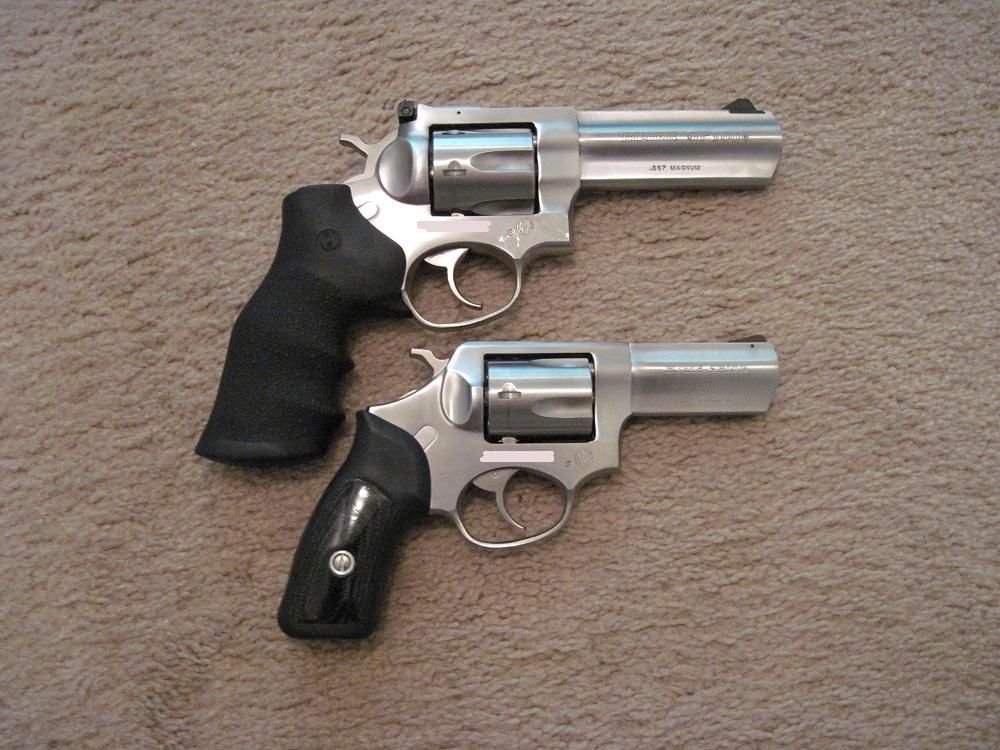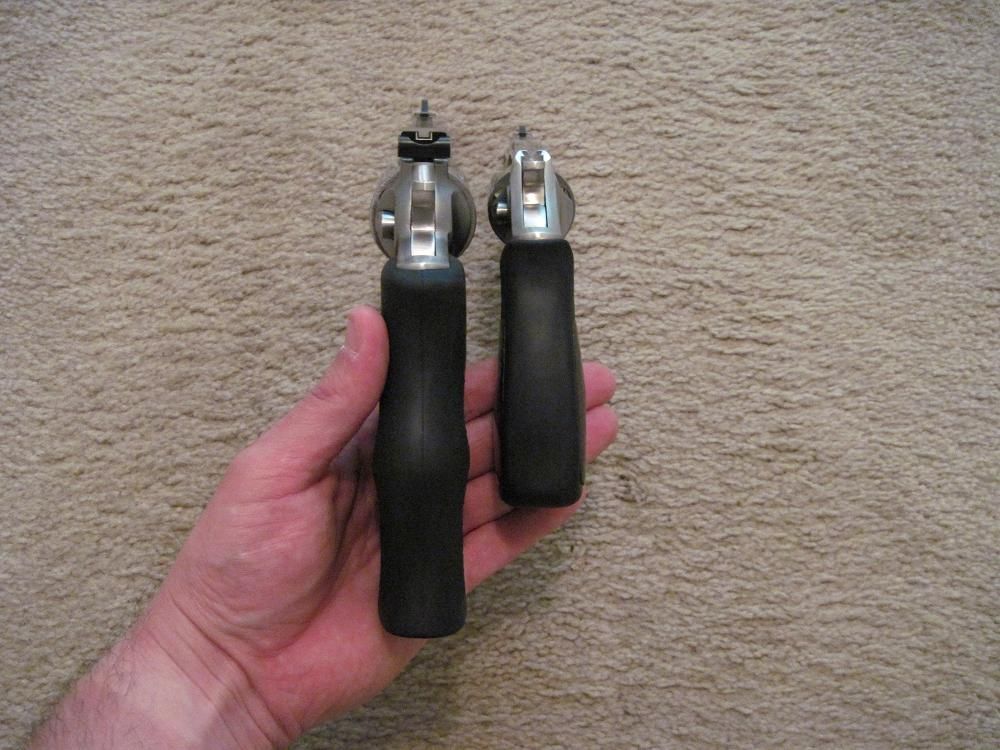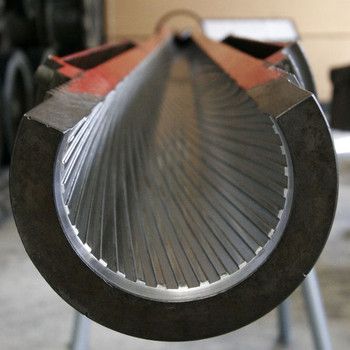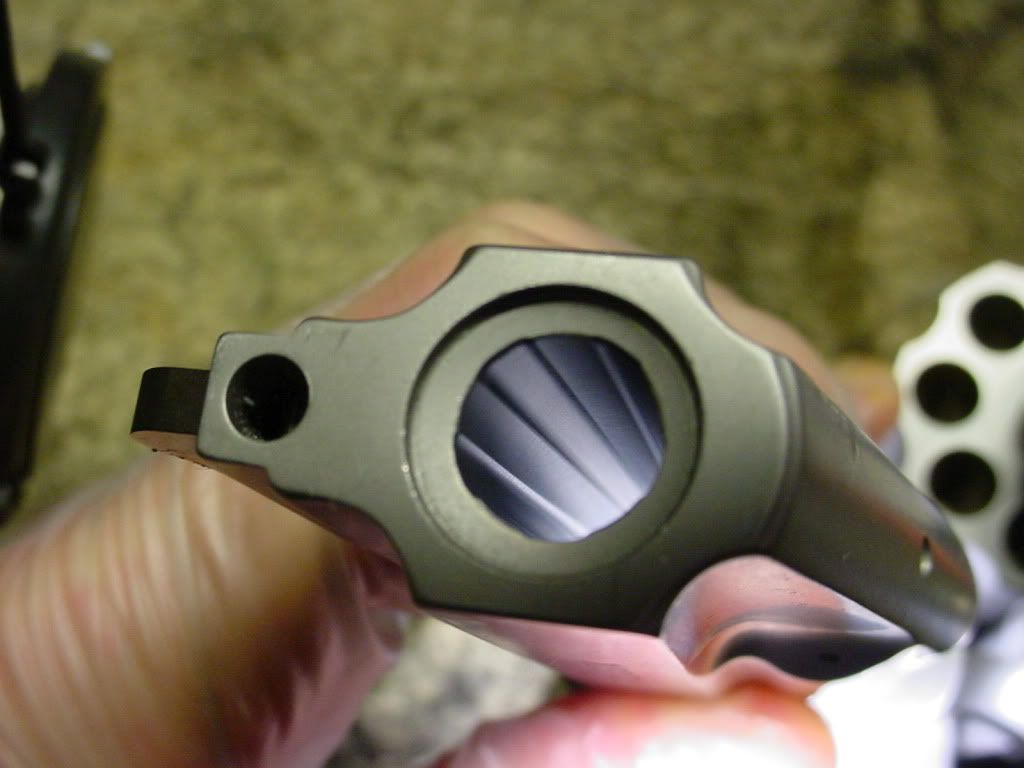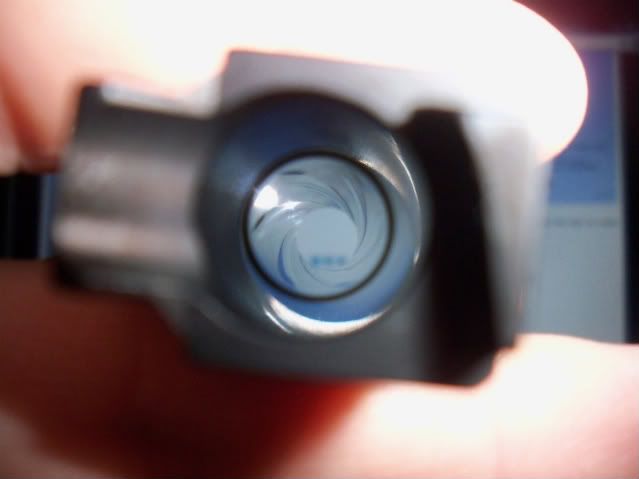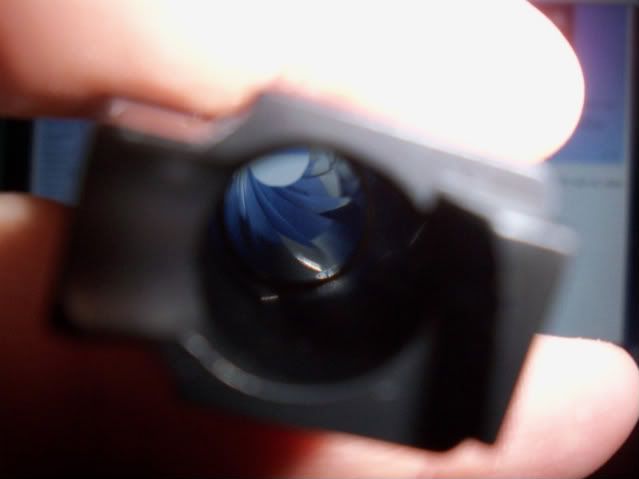Question about scenario.
I want to minimize a black powder gun / cartridge ammo option for optimum conceal and carry while retaining enough energy for self defense considering pure lead ammo. Caliber / Model suggestions?
Best thing I have come up with so far:
Pistol: .357 magnum; short barrel?; stainless steel for corrosion resistance
Caliber of round: Loaded with .357 cartridge rounds. Maybe .38 special?
Type of round: Probably 158 grain Conical pure lead
Type of powder: True Black Powder (probably GOEX)
Powder load: Probably max and slightly compressed due to being black powder.
Purpose for pistol: Conceal and carry personal defense, and home defense.
Theory and background for questions: As of today, 4/15/2013, it is very hard to find ammo. I called literally 20 stores (not exaggerating), walmart, sporting goods stores, gun shops, etc. No one has much ammo selection. (They usually have 1-3 boxes of something you don't shoot.) Went online. No websites have good ammo selection. Backorder is often not even available. Gun shows have some, but ammo is becoming VERY expensive because of "supply and demand."
Reloading is starting to look real good as a back up option if I run out. It is also just a good idea to be able to do, and cheaper as well as a constructive hobby.
I don't want to go all the way back to cap and ball guns. I still want cartridges that I can actually reload at a reasonable speed.
If I REALLY have to, I can make my own black powder, so having a gun that fires rounds which are conducive to firing black powder is a good idea. (Yes, I have a chemistry background.)
What I would like:
(I realize these desires require compromise, and am looking for the best compromise.)
1. A gun tough enough to withstand a full black powder load, and is perfectly ok to fire black powder rounds in.
2. Corrosion / rust resistant (probably stainless steel)
3. A gun with sufficient energy to defend myself.
4. A gun light enough and small enough with a short enough barrel to be comfortable for conceal and carry. (Yeah yeah, you can technically CCW anything if you really want to. Look at Highlander. Duncan McCloud CCWs a greatsword, but I want something comfortable for daily wear even in summer if possible.)
5. A gun that where I don't have to worry about what is behind the target. (Honestly, if I have to draw my weapon, I am probably going to be so scared that worrying about concepts like "over-penetration" hurting the innocent person behind the target is probably not something I am going to remember to think about, so the bullet needs to stop in the target, which the pure lead will help with.)
My Questions:
1. Does a .357 magnum loaded with black powder and pure lead round have enough energy on impact to be good for self defense against a knave?
2. Does a .357 magnum loaded with black powder and pure lead round have too much energy, and I would need to worry about over-penetration and what is behind the target? If so, what smaller common caliber options do I have if I retain the same other requirements.
3. .44 magnum and .45 long colts with cartridges with black powder and pure lead rounds would certainly have over-penetration problems where you would possibly be hurting people behind the target right?
4. Would a BLACK POWDER .38 special be more concealable considering weight and size, WHILE STILL BEING SUFFICIENT for the task considering velocity and energy?
5. Black powder burns slower. What is the shortest barrel length I can go with while still retaining enough energy / velocity since I want to Conceal and Carry?
6. Since reliability can be an issue with black powder and reloading, it is better to go with a revolver instead of a autoloader so it can cycle the round even if it does not fire right?
7. Given all these desires, what gun would you recommend? (Does not have to be .357) I obviously want to minimize a black powder gun / cartridge ammo option for optimum conceal and carry while retaining enough energy for self defense considering pure lead ammo. Caliber / Model suggestions?
I want to minimize a black powder gun / cartridge ammo option for optimum conceal and carry while retaining enough energy for self defense considering pure lead ammo. Caliber / Model suggestions?
Best thing I have come up with so far:
Pistol: .357 magnum; short barrel?; stainless steel for corrosion resistance
Caliber of round: Loaded with .357 cartridge rounds. Maybe .38 special?
Type of round: Probably 158 grain Conical pure lead
Type of powder: True Black Powder (probably GOEX)
Powder load: Probably max and slightly compressed due to being black powder.
Purpose for pistol: Conceal and carry personal defense, and home defense.
Theory and background for questions: As of today, 4/15/2013, it is very hard to find ammo. I called literally 20 stores (not exaggerating), walmart, sporting goods stores, gun shops, etc. No one has much ammo selection. (They usually have 1-3 boxes of something you don't shoot.) Went online. No websites have good ammo selection. Backorder is often not even available. Gun shows have some, but ammo is becoming VERY expensive because of "supply and demand."
Reloading is starting to look real good as a back up option if I run out. It is also just a good idea to be able to do, and cheaper as well as a constructive hobby.
I don't want to go all the way back to cap and ball guns. I still want cartridges that I can actually reload at a reasonable speed.
If I REALLY have to, I can make my own black powder, so having a gun that fires rounds which are conducive to firing black powder is a good idea. (Yes, I have a chemistry background.)
What I would like:
(I realize these desires require compromise, and am looking for the best compromise.)
1. A gun tough enough to withstand a full black powder load, and is perfectly ok to fire black powder rounds in.
2. Corrosion / rust resistant (probably stainless steel)
3. A gun with sufficient energy to defend myself.
4. A gun light enough and small enough with a short enough barrel to be comfortable for conceal and carry. (Yeah yeah, you can technically CCW anything if you really want to. Look at Highlander. Duncan McCloud CCWs a greatsword, but I want something comfortable for daily wear even in summer if possible.)
5. A gun that where I don't have to worry about what is behind the target. (Honestly, if I have to draw my weapon, I am probably going to be so scared that worrying about concepts like "over-penetration" hurting the innocent person behind the target is probably not something I am going to remember to think about, so the bullet needs to stop in the target, which the pure lead will help with.)
My Questions:
1. Does a .357 magnum loaded with black powder and pure lead round have enough energy on impact to be good for self defense against a knave?
2. Does a .357 magnum loaded with black powder and pure lead round have too much energy, and I would need to worry about over-penetration and what is behind the target? If so, what smaller common caliber options do I have if I retain the same other requirements.
3. .44 magnum and .45 long colts with cartridges with black powder and pure lead rounds would certainly have over-penetration problems where you would possibly be hurting people behind the target right?
4. Would a BLACK POWDER .38 special be more concealable considering weight and size, WHILE STILL BEING SUFFICIENT for the task considering velocity and energy?
5. Black powder burns slower. What is the shortest barrel length I can go with while still retaining enough energy / velocity since I want to Conceal and Carry?
6. Since reliability can be an issue with black powder and reloading, it is better to go with a revolver instead of a autoloader so it can cycle the round even if it does not fire right?
7. Given all these desires, what gun would you recommend? (Does not have to be .357) I obviously want to minimize a black powder gun / cartridge ammo option for optimum conceal and carry while retaining enough energy for self defense considering pure lead ammo. Caliber / Model suggestions?

